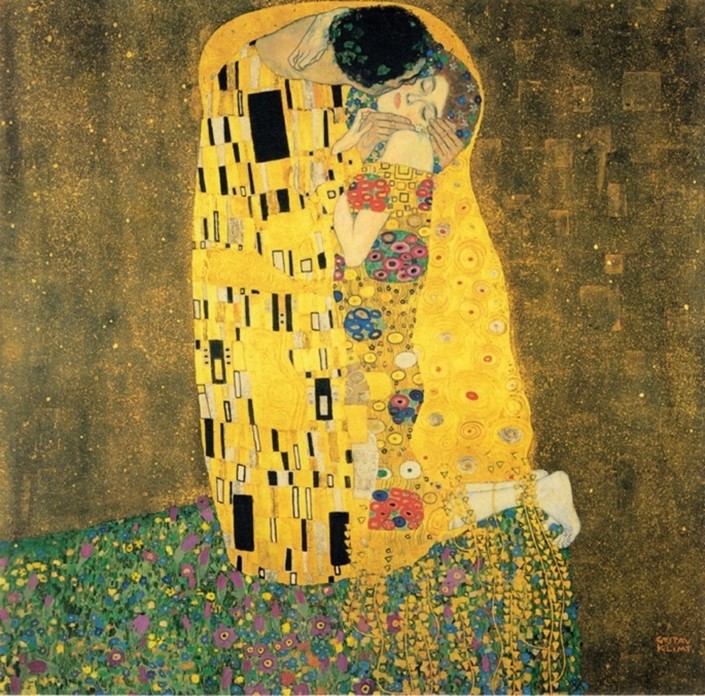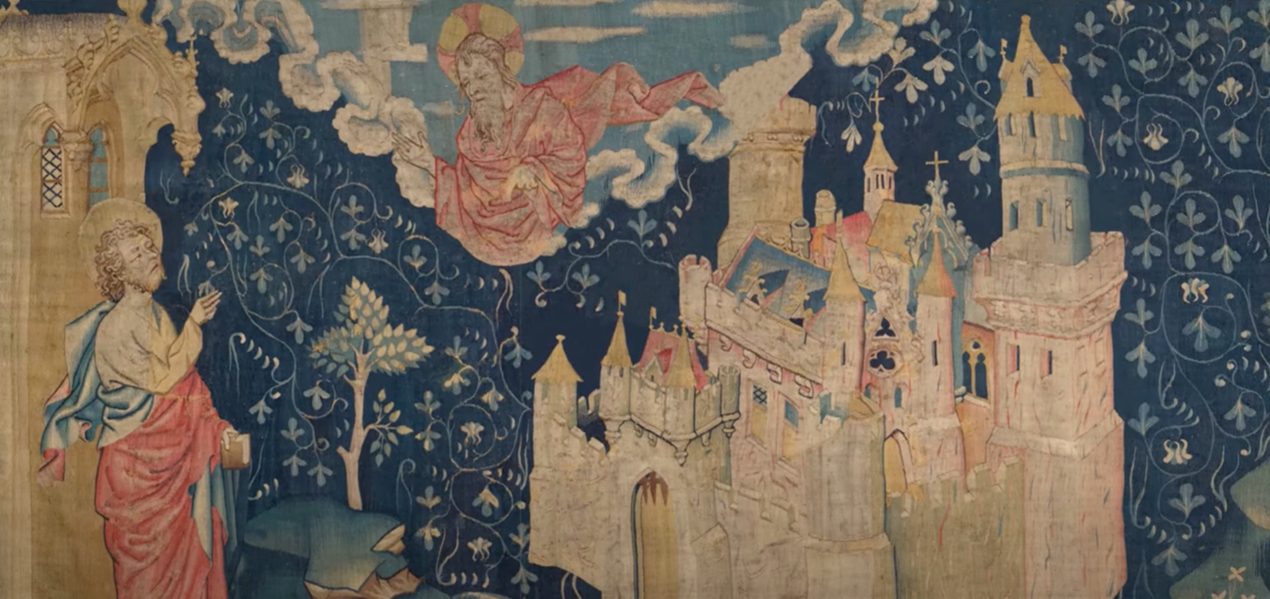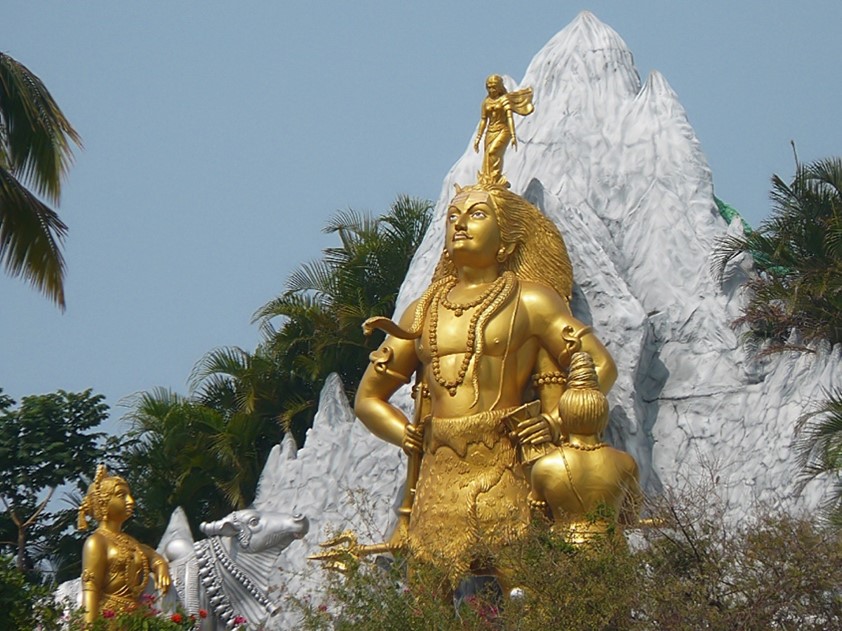
The Kiss, Gustav Klimt (1909)
From time immemorial, gold has never ceased to intrigue. A symbol of wealth and eternity (which often go hand in hand), it was used to make the first coins, before becoming a safe haven.
Its color, similar to that of light, is a source of inspiration for many. Men and women alike use gold in architecture, sculpture and art in general. From the Château de Versailles to the Dome of the Rock in Jerusalem, many monuments have been built from gold. Its inalterable nature has never ceased to fascinate minds, particularly alchemists who sought to achieve purity by turning lead into gold, but also believers. In addition to its representation in various holy places in the form of different objects, gold is also the subject of numerous traditions. Here, we take a brief look at its place in various civilizations and religious currents.
Ancient Egypt
Nearly five millennia ago, in ancient Egypt, gold was associated with the sun god Ra, due to its similar color and brilliance. From then on, the deified yellow metal was synonymous with immortality. Some even believed that accumulating gold would give them access to eternal life (as the wealthiest do today, knowingly or unknowingly, with money), and even decided to bury themselves in solid gold sarcophagi. Such was the case with the tomb of the infant king Tutankhamun, little known at the time.
According to archaeologists, the region was one of the richest in gold in the ancient world, and the Egyptians used it abundantly to make masks, statues and jewelry, as well as divine statues and monuments. The metal was also used in trade with neighboring territories. Nevertheless, only a minority (nobility and clerics in the first instance) could possess it for their own use.
Judaism
Gold is mentioned several times in the Torah, often alongside silver. According to Genesis, the patriarch Abraham is described as possessing much gold (13:2): "Abram was very rich in flocks, silver and gold." Gold is also mentioned in the following verse (24:35): "The Lord has blessed my master abundantly, and he has become wealthy. He has given him sheep and cattle, silver and gold, male and female servants, and camels and donkeys." As well as in the Book of Psalms (105:37), "He brought out Israel, laden with silver and gold, and from among their tribes no one faltered." The yellow metal accompanied the Hebrew people, and enabled the elaboration of various constructions. Moses' Tabernacle, like King David's Temple in Jerusalem, was built from vast quantities of gold. And the Ark of the Covenant - the chest which, according to the Bible, contains the Tablets of the Law given to Moses on Mount Sinai - is entirely covered in yellow metal.
The most famous passage mentioning gold, however, is that of the golden calf. As Moses went to Mount Sinai to receive the Tablets of the Law, the Hebrew people, impatient for him to return, turned to Moses' brother and high priest Aaron to make an idol, commanding them to break the gold earrings of women and children to melt a calf. When Moses returned, he became angry and smashed the Tablets of the Law on a rock. This symbol, more relevant than ever, shows that wealth is not an end in itself, at the risk of falling into arrogance. This is backed up by Deuteronomy 7:25: "You shall not covet the silver or the gold that is on them, nor take it for yourself, lest you be snared in it", and the following verse 17:17: "He must not take many wives, or his heart will be led astray. He must not accumulate large amounts of silver and gold." Gold is a singular wealth and metal, yet it must never lead astray the one who possesses it.
Ancient Greece
We owe to ancient Greece the development of the first coins made of gold (and silver), extending what the ancient Egyptians had begun: using gold as a medium of exchange. The tombs of ancient Egypt were also a source of inspiration, with the same goal of achieving immortality. In fact, the yellow metal played a major role in Greek mythology and its various stories, including that of the Delphic oracle. Among those who came to consult the oracle in the city of Delphi (the center of the world according to the Greeks), a merchant came one day with a gold statue of the Greek god Apollo to offer him as a token of respect. Touched by his gift, the oracle granted him the power to become a celebrity. The merchant did just that. From that day on, everyone in and around the village believed that gold gave access to extraordinary powers.
The story of Midas is also among the most famous, although it embodies another symbol, closer to that of monotheistic religions. This warm-hearted, altruistic Greek king decided to welcome Silenus, who was drinking more than he should, to his palace. Silenus enjoyed the king's quality of life for several days, before Midas decided to take him back to his son and god of wine, Dionysus.Happy to be reunited with his father, the latter thanked him by granting him a wish.Greedy as he was, Midas decided that everything he touched would turn to gold, only to despair when he realized he could no longer eat or drink... and then chose to turn back.
Christianity
In the New Testament, and particularly in the Apocalypse of John, gold is a recurring theme. The Apocalypse (4:4) reads: "Around the throne were twenty-four thrones, and seated on the thrones were twenty-four elders, clothed in white garments, with golden crowns on their heads." Beyond the crowns, gold is present on many objects, the most illustrious of which are Jesus' belt and the seven candlesticks. Most importantly, the heavenly Jerusalem is depicted in gold. This eternal place, which would see the light of day in a new world, and would be similar to the Garden of Eden before the original sin of knowledge, is described in the Book of Revelation as being made entirely of gold (21:18): "The wall was built of jasper, while the city was pure gold, like clear glass."
The inalterable nature of gold has never ceased to inspire Christians. In recent centuries, gold rushes have seemed like divine revelations. The famous California Gold Rush, followed by the declaration of the American Baptist Home Mission Society, is a convincing example.
In the continuity of the Old Testament, however, gold must not be synonymous with idolatry (one of the gravest of sins). In the Book of Revelation, we find in verse (9:20): "The rest of mankind who were not killed by these plagues still did not repent of the work of their hands; they did not stop worshiping demons, and idols of gold, silver, bronze, stone and wood—idols that cannot see or hear or walk."

The Heavenly Jerusalem, Apocalypse Tapestry (Château d’Angers)
Hinduism
It's hard not to mention Hinduism when it comes to gold. In this religious movement, one of the oldest in the world, gold is a love story that runs through history. In India, the first Hindu country and sometimes nicknamed the "Golden Bird", purchases of the yellow metal have never ceased, both nationally and individually. As the gods are regularly represented in gold, owning one would be tantamount to getting closer to them. Celebrations such as Akshaya Tritiya (third day of endless prosperity) and Dhanteras (sacred day to create, innovate and enrich) encourage Indians to buy gold. And the various Indian temples are said to each possess almost 4,000 tons of gold.
Yellow metal is omnipresent at weddings. Its quantity testifies to the social status of the bride and groom, as well as their loyalty to Hindu tradition. Such is its importance that during the wedding season, which generally takes place between May and June, as well as during the autonomous season, the world price of gold is bound to fluctuate.
More broadly, it is a lifelong possession of Hindus, making India one of the world's leading importers of gold. In fact, the country's massive purchases have on several occasions caused the rupee to depreciate. So much so, in fact, that the Indian Gem and Jewellery Federation had to impose a ban on sales to private individuals.

Statue of Shiva
Buddhism
The world's largest gold statue is the Golden Buddha, located in Bangkok's Wat Traimit temple. In Buddhist tradition, gold is a symbol of radiance and enlightenment, often associated with the Sun (as with the Egyptians). In Burma, gold leaf has been produced day and night for centuries, adorning statues and temples as a sign of benevolence. The Shwedagon Pagoda, one of Burma's most prized Buddhist temples, is covered with thousands of sheets of gold. In one of Buddhism's other holy places, on the southern shore of Lake Namtso in Tibet, the roof of the Tsahi Dor monastery was built from gold.

Shwedagon Pagoda, Burma
And so, for millennia, gold has accompanied civilizations, while retaining its mystery.
Of all the cultures influenced in one way or another by gold, we could list many more. Among the Aztecs in particular, whose mastery of sculpture was remarkable for its time, the yellow metal was used to build statues and temples. In the Roman Empire, where it was mined in inestimable quantities thanks to massive mining methods, gold was a metal at the service of the economy. The yellow metal was also used by the Mayans, the Incas and, to a lesser extent, the Muslim world.
In modern times, gold continues to be synonymous with excellence. It is used to make trophies and medals, but also serves consumerist desires in the textile and food industries. Where traditions are preserved, it continues to be accumulated as the ultimate wealth and passed down from generation to generation. Last but not least, it also has an appeal as a safe haven in an increasingly uncertain world.
Reproduction, in whole or in part, is authorized as long as it includes all the text hyperlinks and a link back to the original source.
The information contained in this article is for information purposes only and does not constitute investment advice or a recommendation to buy or sell.


































